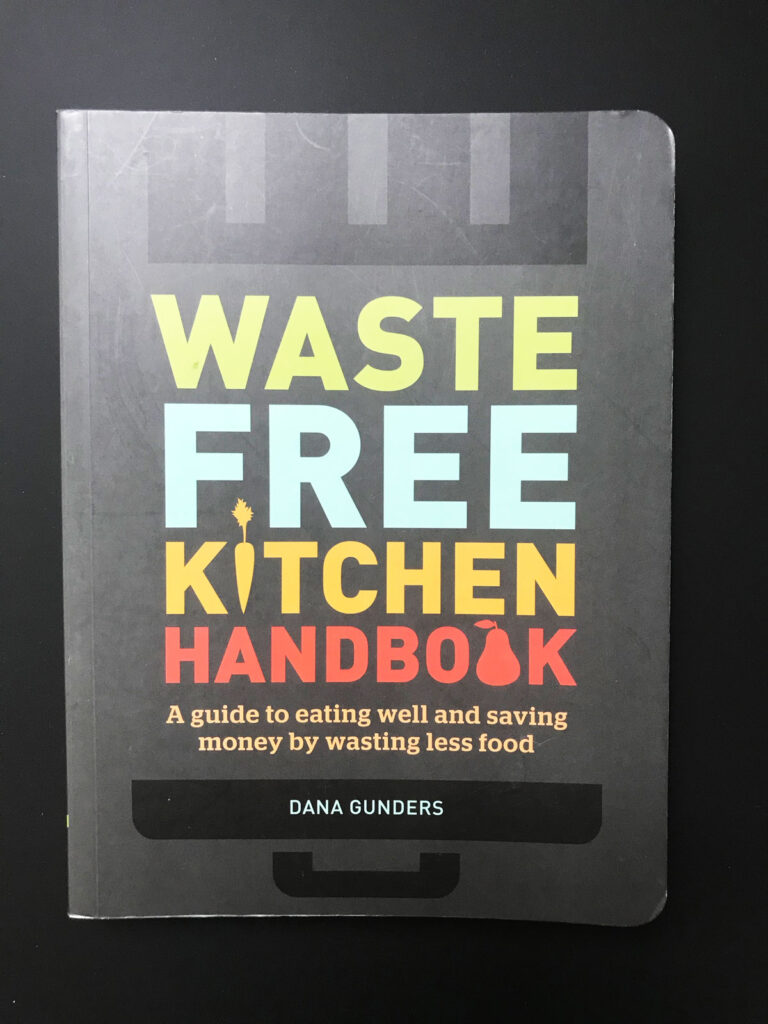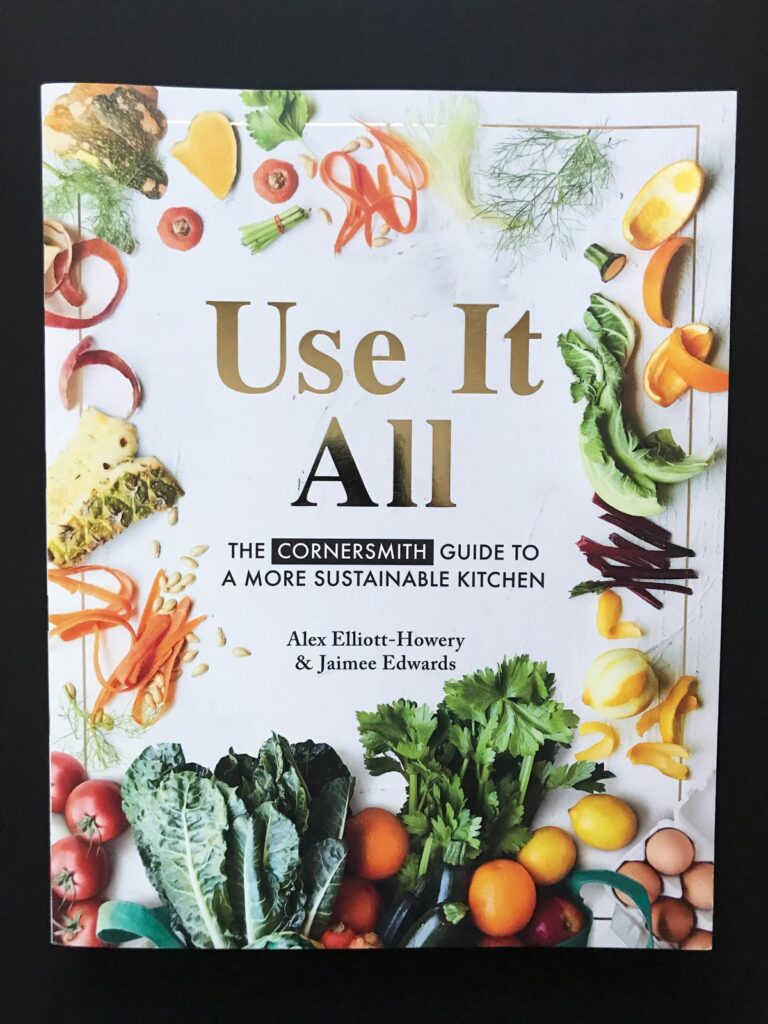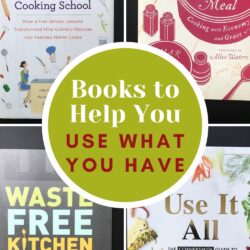The internet is all well and good for a quick fix, but when you want to take a deep dive into a certain topic and cooking strategy, cookbooks are the way to go. Check out these four books to help you use what you have and save money.
Estimated reading time: 5 minutes
Want to save this post?
Enter your email below and get it sent straight to your inbox. Plus, I’ll send you budget recipes and money-saving tips every week!
Some people learn by hearing. Some by watching or doing. Others by reading. If you fall in the last camp, this post is for you.
I’ve long been a fan of books. While I know that audio books and videos can be just as instructive, books are where my heart lies. Especially food books.
It’s by reading that I’ve learned how to carve a chicken, assemble tamales, and bake biscotti. I’ve mastered homemade gravy and yeast breads.
Books and magazines have been my gateway to untold culinary experiences as well as a bridge to learning how to use what we have to our best advantage.
Over the years, I’ve purchased hundreds of cookbooks and culinary resources. Only a few dozen have stood the test of time — and my rigorous dejunking.
Here are four gems that will help you use what you have, waste less food, and enjoy fantastic meals — all while saving you money!
The Kitchen Counter Cooking School by Kat Flinn
A longtime favorite of mine, The Kitchen Counter Cooking School by Kat Flinn is required reading in our homeschool (save one R-rated chapter).
It tells the story of a reporter-turned-chef-turned kitchen coach who takes a group of “culinary novices” and turns them into “fearless home cooks”. She recounts the tale of how she teaches them the ways of the kitchen, such as how to use what you have and create a great meal on the fly.
Emphasizing both money-savings and food-waste issues (the two really do go hand in hand), Flinn adapts professional kitchen strategies for the home cook with humor and patience, ensuring that the reader learns some new kitchen skills as well as gains confidence in the kitchen.
It’s a book that I regularly reread to keep my chops sharp and one that does a fantastic job in helping you learn key strategies to shop, plan, and cook enjoyable, affordable meals.
Get the book here.
Waste-Free Kitchen Handbook by Dana Gunders
More a reference book than a story book, the Waste-Free Kitchen Handbook by Dana Gunders is an invaluable resource for understanding how to purchase, store, and use the food you buy. As its subtitle phrases so aptly, it’s “a guide to eating well and saving money by wasting less food.”
Need to use what you have, but not sure if it’s still good? This book explains how to trim off the sad parts and salvage what’s left.
This book is an excellent resource to learn more about the food you buy and how to use it — even after you’ve forgotten it was there.
Get the book here.
An Everlasting Meal by Tamar Adler
In a prose style akin to MFK Fisher, An Everlasting Meal: Cooking with Economy and Grace is a lengthly narration about how to use what you have in creative ways.
It’s a story with a narrator flitting from stove to fridge to market to table, peppered with recipes here and there, but recipes that are more suggestions than hard and fast rules.
This book is a classic, but for some, its wordiness might be reminscent of Old Man in the Sea, but for food. It’s good, but long, and honestly, I’ve never made it to the end in one reading.
Get the book here.
Use It All by Alex Elliott-Howery & Jaime Edwards
Use It All by Alex Elliott-Howery & Jaime Edwards is newer to my collection, but I was quickly smitten with it. This book is the short paragraphs, pictures, and quick ideas version of An Everlasting Meal.
Read: it’s for those of us with shorter attention spans. lol
I love the pictures — especially since the book is written in Australian English and we don’t use all the same culinary terms. The photos clue me in without having to look something up.
The book is divided into seasonal grocery bags, each section unpacking a bag of ingredients and showing you different ways to use what you have.
The authors own a food shop featuring preserved and canned foods; they’ve included lots of recipes for freezing or preserving so that you don’t have to worry about using that thing up right away.
Loads of inspiration to help you use what you have in delicious ways!
Get the book here.
Have you got a favorite book that helps you use what you have?
Tell us in the comments!








Barbara
Hi Jessica –
I have 3 out of the 4 books you have listed – Kitchen Counter Cooking School, An Everlasting Meal and my favorite is Waste Free Kitchen Handbook – I also purchased Salt, Fat, Acid Heat by Samin Nosrat – great book
Susan Clark
Dear Jessica, sorry I’m late responding to this post. This series of books has changed my life in the kitchen. Pam Anderson has 3 books that encourage and embrace pantry cooking….”How to Cook without Book” CR 2000, “Cook without a book meatless Meals” CR 2011 adaptable for vegans and “How to Cook w/o a Book” update CR 2018. Pam’s CBs inspired me every day. Pam is a James Beard award winner but NOT FUSSY! My other fav is Laurie Colwin “Home Cooking” CR 1988 and “More Home Cooking” CR1993. Laurie is more about conversations about food with random instructions. Sadly she died unexpectedly very young.
Thanks Jessica, I enjoy your blog so very much.
Blessings,
Susan Clark
Esther
The Kitchen Counter Cooking School was a game changer for me! It’s a great reference and has definitely helped to elevate my cooking.
Sujata
Thankyou for sharing I was able to borrow 2 of the books you mentioned online through my library
Jessica
I have loved Family Feasts for $75 a Week by Mary Ostyn. Though the numbers are a bit out of date the principles are great and there are some total keepers for recipes.
Kelly
My library doesn’t have Kitchen Counter Cooking School and I really want to peruse it before buying.
Some of my best meals have been created through desperation. Only a few ingredients available and limited time, but end up being so delicious!
Sujata
I was able to get this just now as an audible book through my local library.
Jessica Fisher
I have ordered books through Amazon that I’ve flipped through as I would at the book store and then returned the next day. It’s fairly simple, though would still require a trip to town.
Alice E
check and see if they can get it for you through inter-library loan, I have used this to borrow books from halfway across the country.
Kelly
My library will check within the state, and I think I tried that, but it’s worth another shot.
Becky
A Cabin Full of Food by Marie Beausoleil https://justplaincooking.ca/a-cabin-full-of-food/
Great resource for using what you have.